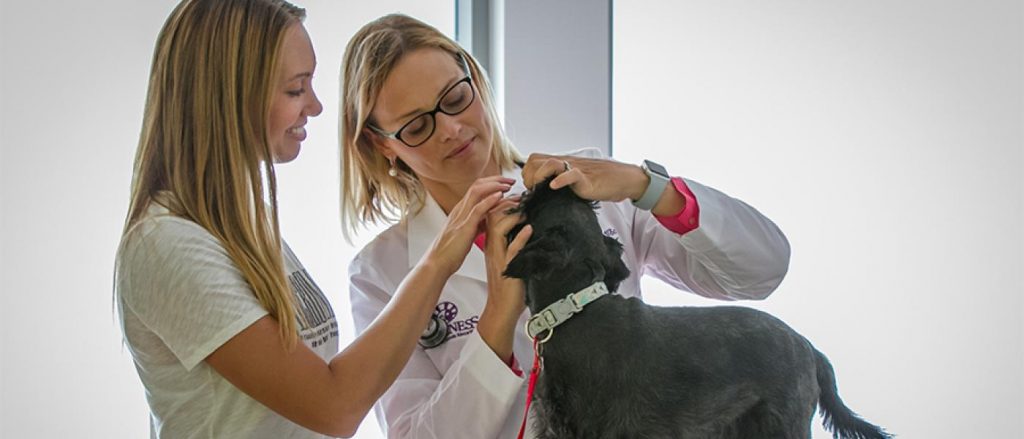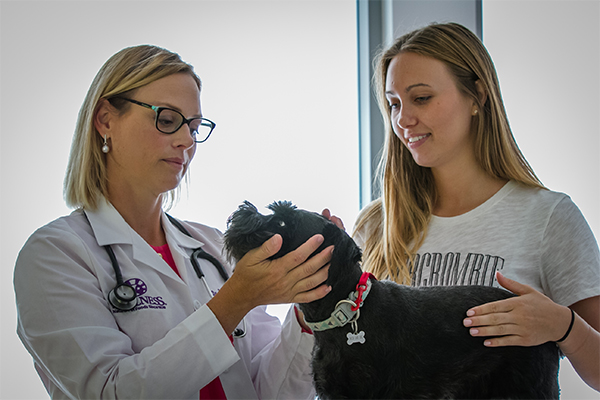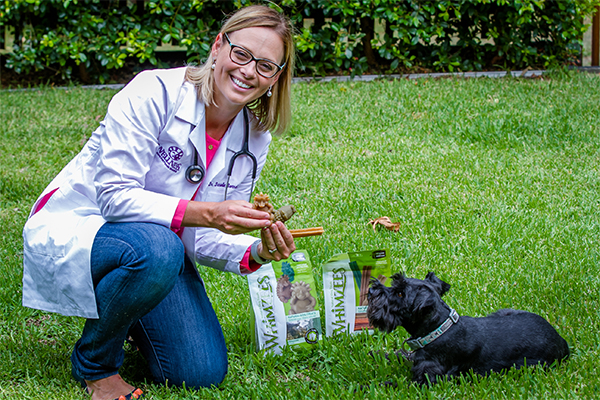What You’ve Always Wanted to Know About Doggy Dental Health

In 2017, the top diagnosis made by US Veterinarians for dogs was dental disease, a problem so widespread it now affects 4 out of 5 dogs over three. Contributing to this epidemic is the lack of daily dental care for dogs, the increase of small breeds and older dogs that are more predisposed to dental issues and the assumption that visible signs of dental disease, like bad breath, are normal.
Dog owners used to believe that occasionally giving a dog a bone to chew was all the dental care dogs needed. Today, we know so much more about the importance of oral care for dogs and understand that a dental health program that includes both professional veterinary care as well as at-home daily dental care is crucial to a healthy mouth and a happy dog.
There are a lot of factors to consider when deciding upon oral care for your dog. Here’s the latest scientific evidence and everything you ever wanted to know about your dog’s teeth, including those questions which you may have been too afraid to ask before:
Are People Dental Issues the Same as Dog Dental Issues?
Tooth decay is not common in dogs: Dogs do not typically develop cavities from tooth decay like people because of the shape of their teeth, the pH of their saliva, the type of bacteria in their mouth and the types of food they consume.
Periodontal disease is very common – 4 out of 5 dogs! Dogs are very susceptible to periodontal disease and tooth loss.
Periodontal disease affects not only the gums, but the supporting structures of the tooth. It is caused by a buildup of plaque and tartar on the surface of the teeth and under the gums. Plaque is the soft, clear or cream-colored biofilm deposit that naturally forms on pets’ teeth. Plaque is made up of large amounts of bacteria with additional particles of food, protein and cellular debris. If plaque is not removed by brushing or active chewing, minerals, primarily calcium, in the dog’s saliva stick to the plaque biofilm and it develops into tartar.
Tartar is the hard yellow/brown material that resists removal and is found below and above the gum. As plaque and tartar levels increase on the teeth, bacteria accumulate around these deposits causing periodontal disease to intensify and cause associated periodontal inflammation visible most frequently at the gum line.
How Do I Know if my Dog Has Dental Disease?

That doggy breath is your biggest clue!
Periodontal disease in dogs causes inflammation of the gums, infections, mouth pain and loss of teeth. If a dog is suffering from dental disease, owners will notice that their dog has bad breath, discoloured teeth, red and inflamed gums and may show a reluctance to eat or pain while eating.
Flip your dog’s lip and have a look at their teeth. What can you see? Do your dog’s teeth look pearly white or slightly discoloured with some yellowing visible? Or do you see a case of significant brown deposits sitting on the molars combined with red and inflamed gums?
If you see any brown deposits or red gums, contact your local veterinarian. Your vet is the expert when it comes to dental health so make the first step to improving your dog’s dental health. A quick phone call to book your dog for an annual health and dental check could do just the trick!
What Can I Do to Help My Dog?
Regular checkups with your vet are essential to a healthy dental routine but like people, dogs need to have their teeth cleaned at home every day. Plaque accumulates every minute of your dog’s day and within just 48 hours this plaque starts to harden into tartar, which is much tougher to remove. When the surface of a dog’s teeth is mechanically abraded (scrubbed!) with a toothbrush or dental chew, this helps remove plaque buildup and reduces the overall progression of dental disease.
Have you brushed your dog’s teeth today?
After a professional veterinary cleaning of your dog’s teeth, brushing your dog’s teeth is the next best option to promote your dog’s dental hygiene. However, we understand brushing a dog’s teeth is often not easy or enjoyable, for you or your pup! It’s estimated that only 2% of dog owners brush their dog’s teeth.

For the 98% of us that don’t brush our dog’s teeth, the easiest way to help remove plaque and tartar from your dog’s teeth is to give them a scientifically proven dental chew like WHIMZEES are 80% more effective at reducing plaque than leading competitors and have a 3x longer chew time to help clean those hard-to-reach places (January 2017).
Available in sizes XS to XL, unique shapes such as Alligators, Hedgehogs and the latest evolution of the toothbrush, Brushzees, there’s sure to be a WHIMZEES to keep your dog happy and your dog’s mouth healthy.




